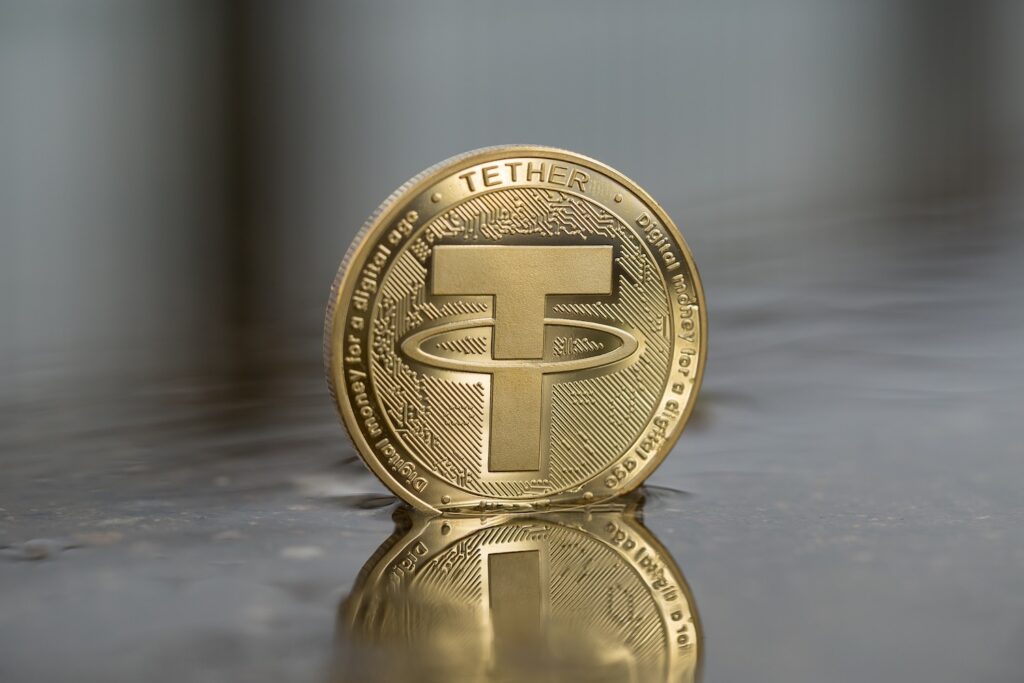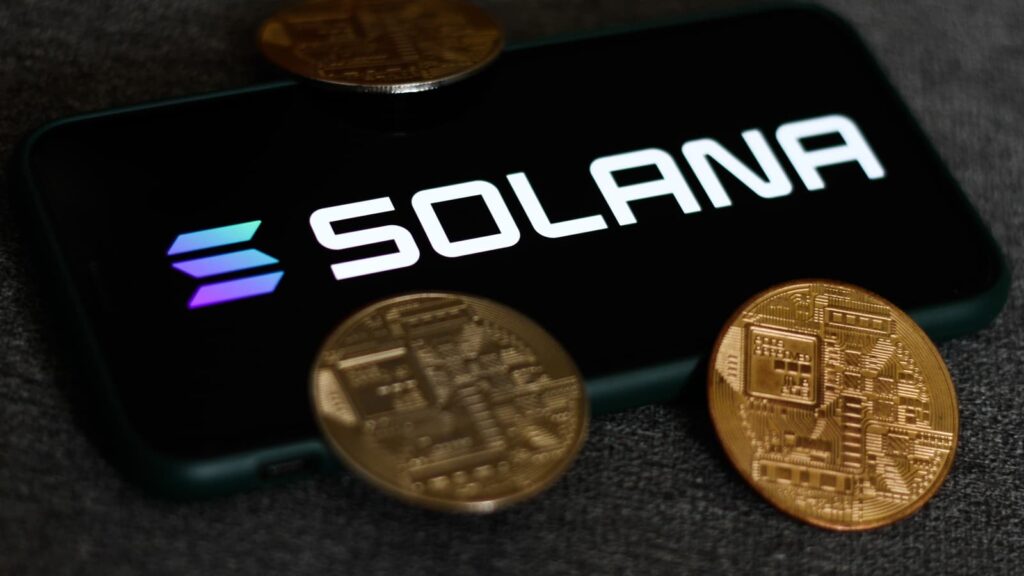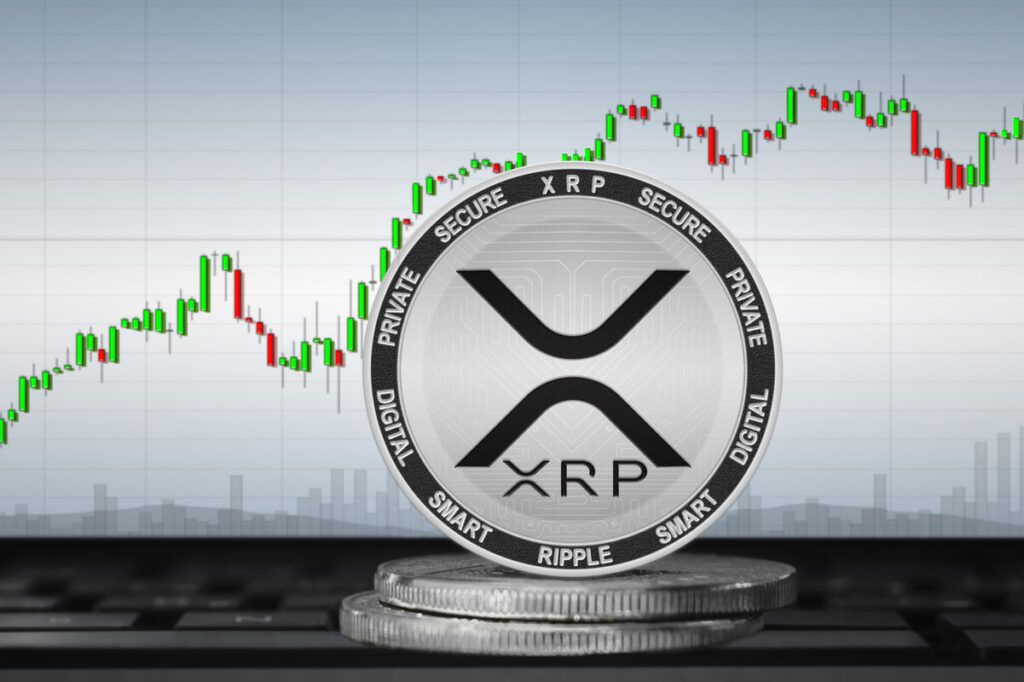Mike Belshe, the CEO of cryptocurrency exchange BitGo, is optimistic about the prospects of a spot Bitcoin exchange-traded fund (ETF) gaining approval.
However, he acknowledges that there are hurdles to overcome in this journey.
In an interview with Bloomberg on November 16, Belshe revealed that discussions between companies seeking Bitcoin ETF approval and the United States Securities and Exchange Commission (SEC) indicate a favorable outcome is on the horizon.
Despite his optimism, Belshe cautioned that challenges lie ahead.
He believes that the SEC may still reject more ETF proposals before granting approval.
One key requirement emphasized by the SEC is the separation of cryptocurrency exchanges from custodial services. Belshe stresses that addressing this condition is essential to securing approval.
Belshe referenced Sam Bankman-Fried, the former CEO of the now-defunct crypto exchange FTX, who advocated for multifaceted operations.
Bankman-Fried proposed taking on various functions within the industry to improve efficiency and compliance with regulations.
READ MORE:Singapore’s Central Bank Launches Live Pilot for Singapore Dollar-Based CBDC
The anticipation surrounding the potential approval of a spot Bitcoin ETF has led to a significant increase in fees on the Bitcoin blockchain.
On November 16, transaction fees on the Bitcoin blockchain reached $11.6 million, representing a 746% rise in average transaction fees compared to 2022.
Despite these challenges, Bitcoin has remained stable, trading near 18-month highs and surpassing its previous bear market range.
Currently, 12 asset management firms are awaiting decisions on their Bitcoin ETF applications.
Bloomberg analyst James Seyffart predicts a 90% chance of approval for these applications by January 10, 2024.
In summary, Mike Belshe, CEO of BitGo, remains hopeful about the approval of a spot Bitcoin ETF.
While he anticipates a positive outcome, he acknowledges the need to address market structure concerns outlined by the SEC.
The surge in Bitcoin blockchain fees underscores the growing excitement surrounding the ETF’s potential approval, and the cryptocurrency market continues to show resilience despite regulatory challenges.
Singapore’s central bank, the Monetary Authority of Singapore (MAS), has taken a significant step in its pursuit of a central bank digital currency (CBDC) with the announcement of a live pilot program for a Singapore dollar-based CBDC.
The program aims to facilitate instant settlements between local commercial banks, marking a crucial development in the world of digital currencies.
MAS Managing Director Ravi Menon unveiled the pilot program on November 16 during the Singapore Fintech Festival.
This initiative represents a departure from earlier simulated CBDC issuance, signaling the central bank’s commitment to moving forward with practical testing.
In the near future, MAS intends to collaborate with local banks to explore the use of CBDCs as settlement assets for domestic payments.
Under this testing program, participating banks will issue tokenized liabilities that represent claims on their balance sheets.
Retail customers can then utilize these tokenized liabilities to conduct transactions with merchants, and settlements will occur seamlessly through the automatic transfer of a wholesale CBDC.
This streamlined process eliminates the traditional lag associated with clearing and settlement, where these activities typically occur on separate systems.
READ MORE: Paxos Secures Initial Approval from MAS for U.S. Dollar-Backed Stablecoin Launch in Singapore
Wholesale CBDCs primarily serve central and commercial banks, as well as other large financial institutions, to facilitate efficient payment settlements.
By introducing a live pilot program for a Singapore dollar-based CBDC, MAS aims to enhance the efficiency and speed of financial transactions within the country’s banking ecosystem.
This announcement follows the MAS’s expansion of its financial infrastructure test program, Project Guardian, on November 15.
The program now boasts 17 members, including major financial institutions like BNY Mellon, HSBC, and Citigroup, up from its original 12.
Project Guardian focuses on assessing various use cases for asset tokenization, further demonstrating Singapore’s commitment to staying at the forefront of fintech innovation.
Moreover, the MAS, in collaboration with the New York Federal Reserve, recently concluded a six-year-long trial program, known as Project Ubin, aimed at evaluating the utility of CBDCs in cross-border payments.
The results underscored the potential for CBDCs to enhance the efficiency and cost-effectiveness of cross-border transactions, reinforcing the importance of ongoing experimentation in the digital currency space.
In summary, Singapore’s central bank is actively pushing the boundaries of CBDC development with its live pilot program, bringing the nation closer to realizing the benefits of digital currencies for efficient and secure financial transactions.
CoinShares, the prominent European digital asset manager, has recently secured an exclusive option to acquire Valkyrie Funds, the exchange-traded fund (ETF) unit of its United States-based competitor, Valkyrie Investments.
This strategic move, announced on November 17, signifies CoinShares’ intent to expand its operations into the United States, potentially positioning itself at the forefront of the burgeoning ETF market in the country.
Jean-Marie Mognetti, CEO of CoinShares, expressed his optimism about this acquisition, emphasizing its potential to capitalize on the current fragmentation within the global ETF market.
He noted that the establishment of crypto spot ETPs in Europe since 2015 is an indicator of the evolving landscape, with the U.S. poised to follow suit.
Mognetti believes that this market disparity presents both challenges and significant opportunities for CoinShares.
The option to acquire Valkyrie Funds will remain active until March 31, 2024.
During this period, Valkyrie Funds will continue to operate as an independent entity until the acquisition by CoinShares is finalized, marking an exciting development in the digital asset investment sphere.
In addition to the acquisition option, CoinShares and Valkyrie have also agreed on a brand licensing term.
This agreement allows CoinShares’ name to be used in future S-1 filings with the U.S. Securities and Exchange Commission (SEC), which are typically filed when companies plan to go public.
READ MORE: New York Tightens Cryptocurrency Listing and Delisting Rules to Enhance Investor Protection
If the SEC approves the Valkyrie Bitcoin Fund, it will incorporate the CoinShares name into the ETF, further solidifying their collaboration.
Valkyrie had previously filed for the spot Bitcoin (BTC) ETF on June 21, along with other financial heavyweights like BlackRock.
CoinShares, overseeing more than $3.2 billion in assets under management, had already expressed optimism about the U.S. cryptocurrency ETF market in September.
They emphasized that the United States, as an economic powerhouse, is actively addressing digital asset regulation, dispelling any notion of lagging behind in this rapidly evolving space.
In summary, CoinShares’ exclusive option to acquire Valkyrie Funds marks a strategic leap towards expanding its presence in the United States and tapping into the potential of the growing ETF market.
This move holds the promise of reshaping the digital asset investment landscape on a global scale.
Tether, a prominent stablecoin company, is gearing up for a substantial expansion into the realm of Bitcoin mining, as revealed by Paolo Ardoino, who is slated to assume leadership of the company in the near future.
In an interview with Bloomberg, Ardoino disclosed that Tether is contemplating an investment of approximately $500 million over the next six months.
This capital will be allocated towards the development of mining facilities and investments in other mining entities.
To bolster its mining capabilities, Tether intends to establish mining facilities in Uruguay, Paraguay, and El Salvador.
The aim is to command 1% of the Bitcoin mining network’s computational power. These forthcoming sites will boast impressive capacities ranging from 40 to 70 megawatts (MW).
Interestingly, a portion of Tether’s mining investment is derived from the $610 million debt financing arrangement recently announced with the German mining firm Northern Data Group.
This move aligns with Tether’s strategic approach, which has seen the company extend loans throughout the year.
READ MORE: Solana (SOL) Achieves New Yearly Highs with 17% Surge after Cathie Wood’s Praise
In September, Tether had already made a strategic investment in Northern Data Group to support their artificial intelligence initiatives.
Ardoino further outlined Tether’s ambitious plans, with expectations to elevate its direct mining operations to 120 MW by the end of the year, and a grander vision of reaching 450 MW by the close of 2025.
Notably, the company is also exploring the possibility of establishing a 300-MW facility, and they are setting up their mining facilities within mobile containers that can be relocated to leverage favorable electricity prices.
Ardoino emphasized that their approach to mining involves gradual learning and growth, underscoring that they are not rushing to become the largest mining entity globally.
Paolo Ardoino is slated to assume the role of Tether’s CEO in December while maintaining his position as the Chief Technical Officer of the parent company, Bitfinex, as per the plans disclosed in October.
As of the time of this publication, Tether had not responded to an inquiry from Cointelegraph.
Grayscale Investments has adopted a strategic approach to navigate the regulatory landscape surrounding Ether-based exchange-traded funds (ETFs) in the United States.
Bloomberg ETF analyst James Seyffart suggests that Grayscale is employing its Ether futures ETF application as a “trojan horse” to push the United States Securities and Exchange Commission (SEC) towards approving its spot Ether ETF.
On November 15th, Seyffart took to Twitter to express his viewpoint following the SEC’s decision to delay Grayscale’s ETH futures ETF application.
He believes that if the SEC were to give the green light to Grayscale’s application for an Ether futures ETF, it would set a precedent that could be leveraged to argue for the approval of its spot Ether ETF application.
Conversely, if the SEC were to deny Grayscale’s bid for an Ether futures ETF, the asset management firm could argue that the SEC is applying different standards to Bitcoin and Ether futures ETFs.
This differentiation would manifest by permitting one under the Securities Act of 1933 while rejecting the other.
READ MORE: Kazakhstan’s Chairman Conducts Historic Transaction with Digital Tenge
Seyffart predicts that the SEC will be faced with a challenging decision: either approve the Ether futures ETF and justify its differentiation from spot ETFs, or deny it and defend why products governed by the 1933 act are substantially distinct from those regulated by the 1940 act.
In his opinion, both scenarios pose difficulties for the SEC, making Grayscale’s move strategically astute.
Notably, Grayscale submitted its Ether futures ETF application via a 19b-4 form, a filing intended to inform the SEC about a security-based swap request.
Seyffart observed that none of the approximately 40 approved Ether ETF products had followed this 19b-4 approval process, initially leaving him puzzled about Grayscale’s choice.
However, Seyffart now interprets this move as part of Grayscale’s strategic “chess” game with the SEC.
By using the Ether futures ETF as a “trojan horse,” Grayscale seeks to secure a 19b-4 order from the regulator, positioning itself to corner the SEC into a precarious situation, regardless of their decision.
In summary, Grayscale Investments is strategically maneuvering within the regulatory framework to gain approval for its spot Ether ETF by leveraging its Ether futures ETF application as a catalyst for change in the SEC’s stance on cryptocurrency-based ETFs.
This calculated approach aims to leave the SEC in a challenging position, regardless of their ultimate decision.
New York’s financial regulator, the New York State Department of Financial Services (NYDFS), has recently introduced stricter guidelines for cryptocurrency firms listing and delisting digital assets in the state.
The primary aim of these new regulations is to enhance investor protection and mitigate potential risks associated with cryptocurrencies.
Under these new rules, cryptocurrency companies are now required to submit their coin listing and delisting policies for approval by the NYDFS.
These policies will be subject to a comprehensive evaluation based on more rigorous risk assessment standards established by the NYDFS.
The evaluation will encompass various factors, including technological, operational, cybersecurity, market, liquidity, and illicit activity risks associated with the tokens.
These regulations apply to all digital currency businesses operating in New York, including those licensed under the New York Codes, Rules, and Regulation, or limited purpose trust companies governed by the state’s Banking Law.
The NYDFS initially sought public feedback on these proposed regulations in September.
READ MORE: Poloniex Prepares to Resume Operations Following $100 Million Hack
One notable provision in these regulations is that cryptocurrency firms with previously approved coin listing policies are no longer allowed to self-certify tokens unless they obtain approval from the NYDFS.
Prominent cryptocurrency firms like Circle, Gemini, Fidelity, Robinhood, and PayPal are among those obligated to comply with these new rules.
These companies are required to meet with the NYDFS by December 8, 2023, to present their draft coin listing and delisting policies, with final submissions due by January 31, 2024.
Adrienne A. Harris, the Superintendent of Financial Services, emphasized that the NYDFS plans to adopt an “innovative and data-driven approach” to oversee coin listings, delistings, and the broader cryptocurrency market.
She clarified that these regulations are not indicative of a state-wide crackdown on the cryptocurrency industry but rather an effort to ensure that New Yorkers have a well-regulated means of accessing the virtual currency marketplace while positioning New York as a hub for technological innovation and forward-looking regulation.
The NYDFS has been proactive in addressing cryptocurrency-related concerns, expanding its capacity to identify illicit activities such as insider trading and market manipulation within the cryptocurrency space.
With approximately 690 blockchain-based companies headquartered in New York and nearly 19% of New Yorkers owning cryptocurrencies, these regulations are pivotal in creating a safer and more regulated environment for cryptocurrency investors and businesses in the state.
Blockchain security firm CertiK recently released a video that raised concerns about a potential security vulnerability in Solana’s crypto-enabled Saga phone.
CertiK claimed that the Saga phone contained a “critical vulnerability” known as a “bootloader unlock” attack, which they suggested could allow malicious actors to install a hidden backdoor in the device.
They further asserted that this could compromise sensitive data, including cryptocurrency private keys.
In response, Solana Labs disputed CertiK’s claims, stating that the video did not reveal any legitimate threat to the Saga device.
According to Solana Labs, unlocking the bootloader and installing custom firmware would require multiple steps, which can only be performed after unlocking the device with the user’s passcode or fingerprint.
Additionally, unlocking the bootloader would result in the device being wiped, a process that users are made aware of through multiple warnings.
READ MORE: Kazakhstan’s Chairman Conducts Historic Transaction with Digital Tenge
This means that the process cannot take place without the user’s active participation and awareness.
The Solana Saga phone, initially priced at $1,099 when it was released in April 2022, aimed to provide users with a Web3-native decentralized application store, integrating cryptocurrency applications into the device’s hardware.
However, four months after its launch, Solana reduced the phone’s price to $599 due to a decline in sales.
It is essential to note that CertiK’s claims and Solana Labs’ response highlight the ongoing debates and discussions within the blockchain and crypto industry regarding security vulnerabilities and their potential impact on users.
While concerns about security should not be dismissed, Solana Labs has argued that the claimed vulnerability is not as straightforward to exploit as initially suggested by CertiK.
As the industry continues to evolve, maintaining robust security standards and addressing potential threats remains a priority for both companies and users in the crypto space.
The chairman of Kazakhstan’s National Payment Corporation (NPC), Binur Zhalenov, made history by conducting the inaugural transaction using the country’s newly introduced central bank digital currency (CBDC) known as the digital tenge.
This significant milestone took place during his address at the XI Congress of Finance in Almaty on November 15, where he used a debit card linked to the CBDC account for the payment, as reported by the local news outlet, Kapital.kz.
Zhalenov officially launched the digital tenge on Kazakhstan’s retail market, signaling the beginning of what he described as the “massive platform’s development” set to unfold in 2024.
Kazakhstan forged partnerships with global payment giants Visa and Mastercard, in addition to collaborating with local banks, to seamlessly integrate the CBDC into plastic cards.
Zhalenov noted that this innovation enables users to make payments using the digital tenge from anywhere in the world, including through popular payment platforms like Apple Pay and Samsung Pay.
Emphasizing the digital tenge’s versatility, Zhalenov highlighted its programmable capabilities, paving the way for applications in smart contracts, cutting-edge financial services, and digital asset transactions.
READ MORE: Global Leaders Gather at APEC Summit in San Francisco to Discuss Economy and Digital Assets
Looking ahead, the development of the CBDC will shift its focus to enabling offline payments in 2024, with the National Payment Corporation (NPC) aiming to implement the digital tenge in cross-border trade by 2025.
The journey towards the digital tenge commenced in February 2023, with an initial target launch date of 2025. The NPC, established in September, assumed the pivotal role of spearheading the development and execution of the CBDC project.
Concurrently with the swift rollout of the CBDC, Kazakh authorities have intensified their oversight of the cryptocurrency market.
In September, local media reported difficulties in accessing major international cryptocurrency exchanges such as Coinbase and Kraken without a valid local license.
Subsequently, in October, local crypto mining operators collectively addressed President Kassym-Jomart Tokayev, urging a revision of the newly introduced tax rates imposed on mining activities.
The debut transaction with the digital tenge marks a significant step forward in Kazakhstan’s digital financial landscape, showcasing the nation’s commitment to embracing innovative digital payment solutions while concurrently addressing regulatory challenges in the broader cryptocurrency ecosystem.
The Blockchain Association, a prominent cryptocurrency advocacy group based in the United States, has vehemently opposed the tax regulations introduced by the Internal Revenue Service (IRS).
In a letter dated November 13th, the Blockchain Association (BA) raised significant concerns regarding the IRS’s proposed rules, which were unveiled in August and aimed at regulating the sale and exchange of digital assets by brokers.
The BA argued that these proposed rules not only exceeded the IRS’s authority but also demonstrated a “fundamental misunderstanding about the nature of digital assets and decentralized technology.”
The U.S. Treasury Department had released a draft of these rules in an attempt to address the complexities surrounding reporting and taxation of cryptocurrency transactions.
The Blockchain Association’s critique of the proposal primarily revolved around the belief that many participants in the cryptocurrency space would struggle to comply with these regulations if they were enacted.
They contended that individuals involved in decentralized finance (DeFi) would be “fundamentally unable to comply” with the proposed regulations.
The BA accused the Treasury of overstepping its authority and potentially infringing upon constitutional rights such as privacy and freedom of expression.
READ MORE: China’s New Phishing Scam Targets Crypto Users Through Fake Skype App
Kristin Smith, CEO of the Blockchain Association, emphasized the need for the Treasury Department to take more time to understand the potential harm and impracticality of the expanded broker definition on developers of decentralized technology in the U.S.
Furthermore, Smith argued that the Treasury’s proposal could encroach upon the privacy rights of individuals using decentralized technology.
Since the release of the draft rules in August, various stakeholders, including U.S. lawmakers, industry leaders, and legal experts, have voiced their opinions on the implications of the proposal for the future of cryptocurrency taxation in the country.
Under the current draft, the rules for reporting cryptocurrency transactions could come into effect in 2026 for transactions conducted in 2025.
In October, Paul Grewal, the chief legal officer of Coinbase, warned that the rules could pose a significant threat to the nascent cryptocurrency industry just as it was gaining momentum.
On the other hand, a group of U.S. senators expressed support for the proposed regulations, advocating for their enforcement before 2026.
In conclusion, the Blockchain Association’s opposition to the IRS’s proposed tax regulations underscores the ongoing debate and concerns surrounding cryptocurrency taxation in the United States, with various stakeholders expressing differing viewpoints on the matter.
A BlackRock filing briefly sent shockwaves through the cryptocurrency market on the late evening of November 13th.
News of the asset manager’s supposed creation of an XRP (XRP) exchange-traded product led to a sudden 12% surge in XRP’s price. However, the excitement was short-lived, as it became evident that the filing was a fake.
The frenzy unfolded over the course of about an hour when keen-eyed Twitter users stumbled upon a Delaware filing indicating that BlackRock had submitted registration documents for the “iShares XRP Trust.”
This filing was interpreted as a precursor to the launch of an exchange-traded fund (ETF) based on XRP.
Within just 30 minutes of this news breaking, XRP’s price shot up to $0.73, reflecting a 12% increase in its value.
Unfortunately for XRP enthusiasts, the jubilation was swiftly replaced by disappointment. Bloomberg ETF analyst Eric Balchunas, who had reached out to BlackRock for confirmation, revealed that the filing was indeed a forgery.
READ MORE: Ripple CEO Advocates Multichain Future and Regulatory Clarity at Ripple Swell 2023
It was suspected that an individual had posed as BlackRock managing director Daniel Schwieger to list the XRP trust on the Delaware list of corporations’ website.
Dylan LeClair, an analyst at Bitcoin Magazine, was among the first to report this intriguing development. Balchunas and The Block also shared the listing initially but later removed their posts upon learning of the deception.
BlackRock’s interest in expanding its cryptocurrency offerings had already been signaled when the company filed for a spot Ether ETF on November 9th.
Unlike the XRP incident, there is no doubt about the legitimacy of the Ether ETF filing. Nasdaq officially confirmed its submission to the Securities and Exchange Commission through a 19b-4 submission.
In conclusion, the cryptocurrency market experienced a brief but intense surge in XRP’s price due to a false BlackRock filing indicating the creation of an XRP ETF.
Within an hour, the excitement turned to disappointment as it was revealed to be a fake listing, attributed to an impersonation of a BlackRock executive.
BlackRock’s genuine intentions to expand its cryptocurrency offerings, including a spot Ether ETF, remain unaffected by this incident.













